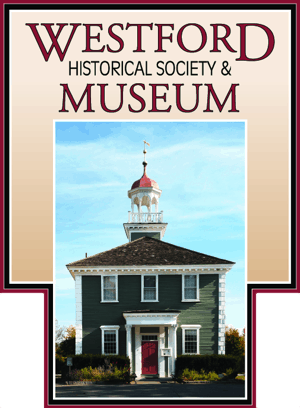Discover the captivating story of Westford through the tracks that carved its identity. These pathways are more than just routes—they are the lifelines that transformed a community, weaving tales of adventure, resilience, and connection. Dive into the rich heritage of Westford with Marilyn Day and explore how the Railroad and Street Railway played a pivotal role in shaping the vibrant tapestry of our town’s history. Join us on this journey and uncover the hidden stories that resonate with every step!
Marilyn Day, who enjoys researching Westford’s history, has created two videos that feature historical documents, newspaper articles, photographs, and personal stories, highlighting the rich history of Westford’s rail systems.
In December of 1905, work was reportedly underway on a new electric trolley line in Graniteville, according to the Westford Wardsman. Workers began laying tracks with iron rails near Charles Cumming’s house on Main Street, continuing towards Greig’s Corner. The construction crew aimed to complete the track along the highway before the onset of winter weather. The main section of the track was successfully laid, overseen by Mr. Downing, and track laying was managed by Michael O’Loughlin from Philadelphia. Timothy Galvin was the foreman, and Mr. Carey from the L. N. Farnum Company contributed to the project.
When the trolley’s branch line made its initial test run to Westford Center on Thursday, May 23, 1907, and students at Tadmuck School, located at 20 Boston Road, did not return from recess, teachers found them swarming inside and out of the new trolley.
The Westford branch line operated until its closure in 1919, while the main Lowell and Fitchburg trolley system continued to operate in the area until it was sold at auction in 1929 for scrap.
In 2004, Westford author Paul Baillio published a book detailing the history of an old railroad that significantly impacted the railroad history of Westford and surrounding towns. The book is titled “The Nashua, Acton, & Boston Railroad, 1871-1925: A Legacy of Wonderful Arch Bridges and Quiet Walking Trails.” You may already be familiar with the Stone Arch Bridge Trail, which was once the roadbed for this railroad.
Westford historian Marilyn Day, with assistance from Rick Hurst, a Boston & Maine Archives member, enhanced Mr. Baillio’s research by adding additional details, photographs, and information about this Westford rail line.
Available through the Westford Museum online store
Day and Hurst: The Nashua, Acton & Boston Railroad (1871-1925)
